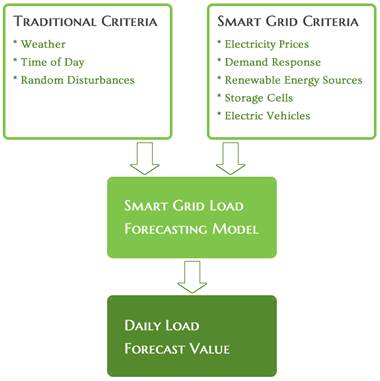 Forecast Markets
Forecast Markets
Your custom forecasts are modeled, analyzed, and real-time adjusted for:
- Any Zone or Sub-Zones (with available historical data)
- Combined Zones (multiple Sub-Zones)
- All ISO Zones and Sub-Zones
- Utility-defined Zones and Sub-Zones
- Generation Providers
- Distributors
- Wholesalers
- Retailers
- Traders
- Re-Marketers
- Cooperatives
- Regulated and Deregulated Electricity Markets
- Regional Transmission Organizations (RTOs)
- Independent System Operators (ISOs)
- Renewables
- Smart Grids
- Micro Grids
 ISO Regulated Zones: Day-ahead Markets
ISO Regulated Zones: Day-ahead Markets
Because generation resources have different start-up times (ranging from more than 24 hours for large steam units to under 10 minutes for gas turbines), system operators must begin the process of scheduling generation based on forecasts of next day system conditions. This is the function of the ISO day-ahead market, which takes place in the afternoon of the day prior to the operating day. The day-ahead market consists of an integrated forward market that clears on the basis of schedules and market bids submitted by both suppliers and load. The integrated forward market is also where the ISO aims to procure 100% of its ancillary service requirements for the next day, including regulation, spinning reserves and non-spinning reserves. The ISO then makes adjustments to the day-ahead schedule using its own load forecasts and forecasts of renewable production in a process called the residual unit commitment. This sequence of markets and procedures is collectively called the day-ahead market.
Day-ahead forecast errors for variable energy resources are not insignificant. From an operational perspective, the failure to schedule renewable resources day-ahead can result in additional commitment of conventional resources. In the event that the day-ahead market significantly underestimates the next day’s renewable production, situations can arise in which the ISO has difficulty committing the right conventional units to provide integration capabilities in real-time.
For more information, click here: https://www.caiso.com/2804/2804d036401f0.pdf
Smart Grid Load Forecasting Models
The timeliness and accuracy of load forecasting have significant effects on power system operations and production costs. The impact is especially vital in the smart grid environment as the spot market prices and electricity demand are interdependent. Under-forecasting demand by a utility may result in buying deficit power at higher than actual market prices. And, in over-forecasting demand, utilities end up in starting too many units, resulting in higher operating costs. Thus, accurate demand forecasts are financially critical to a utility.
Smart Meters
With the rapid growth of smart meter installations, utilities have hybrid groups of customers with smart or traditional meters. Usage behavior of smart meter customers is completely different due to the features and functions of smart meters. So, utility forecasters need to develop separate forecasting models for each type of consumer which can be seamlessly integrated toward final forecasted values to be submitted to power generation providers.
Forecast Intervals
Electricity consumption data is usually available in 15 minute intervals from smart grid utilities. For wind data, we normally accommodate 5 minute interval integration. Our forecasting models easily integrate and reflect these same time spans.
Blended Models
Development of forecasting models for different time intervals (ex: traditional meter consumers, vs. smart meters) may be combined to obtain final forecast values.
Scenario Models
With specific variables affecting cumulative demand forecasting, the impact of each factor on a load forecasting model should be clearly understood by utility forecasters. Scenario-based forecasting modeling helps to analyze the impact of each variable on overall demand forecasting. For example, our scenario modeling can provide forecasted output, reflective of a temperature variation range and a specific MW demand response availability (or whatever parameters you desire).
Customer Insight
Forecasts also benefit the electric consumer in understanding the relationship between the demand and price and varying the electricity usage pattern according to the price. This includes residential, commercial, and industrial users.
What Are You Waiting For?
Request a Demo, and inquire about our Pilot Program (full use of LoadVISION) for approved candidates.
Request a Demo